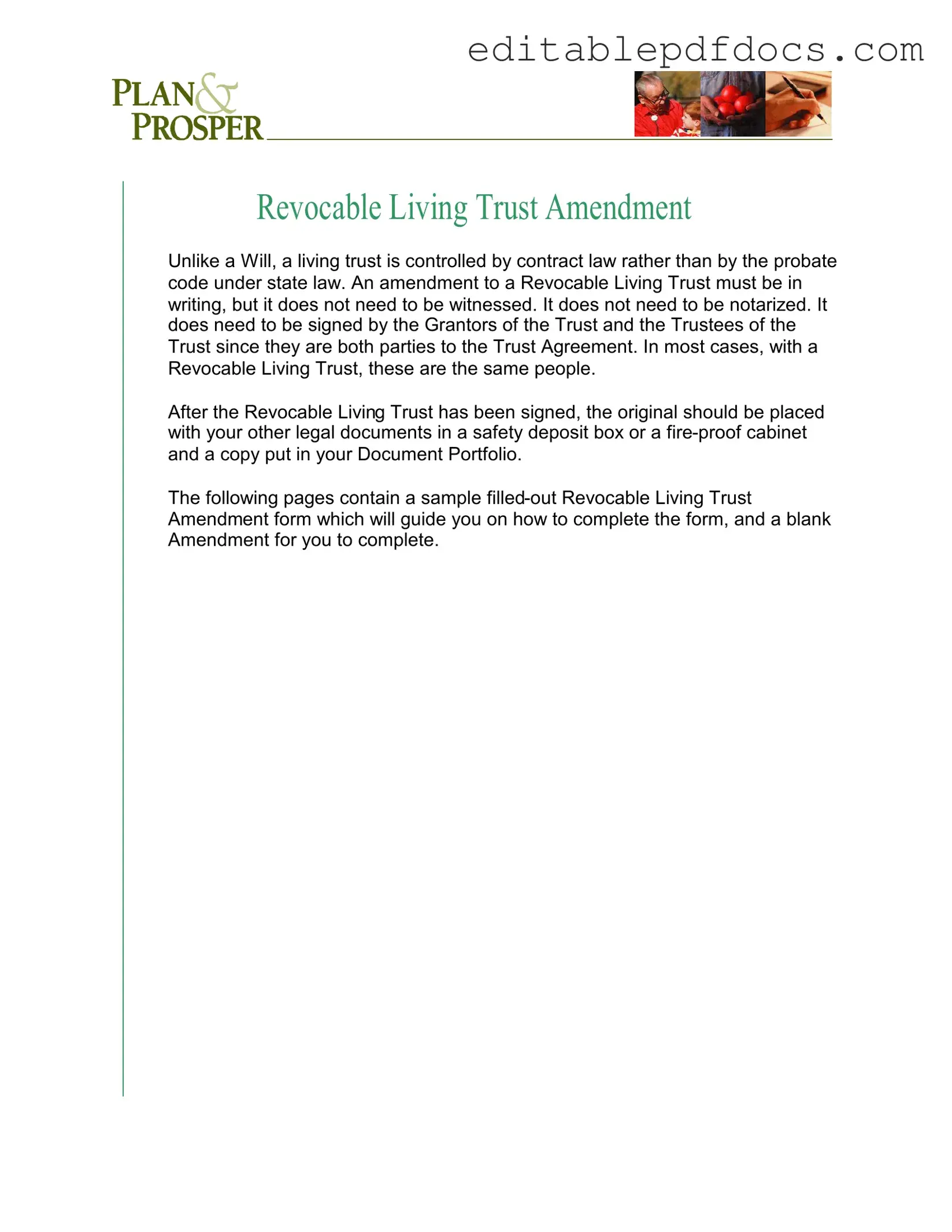Fill a Valid Trust Amendment Template
The Trust Amendment form serves as a crucial document for individuals looking to modify their Revocable Living Trust. Unlike a Will, a living trust is governed by contract law, allowing for flexibility without the need for witness or notarization. To ensure your wishes are accurately reflected, it is essential to complete this form, which requires signatures from both the Grantors and Trustees.
Ready to make changes to your trust? Fill out the form by clicking the button below.
Open Editor Now
